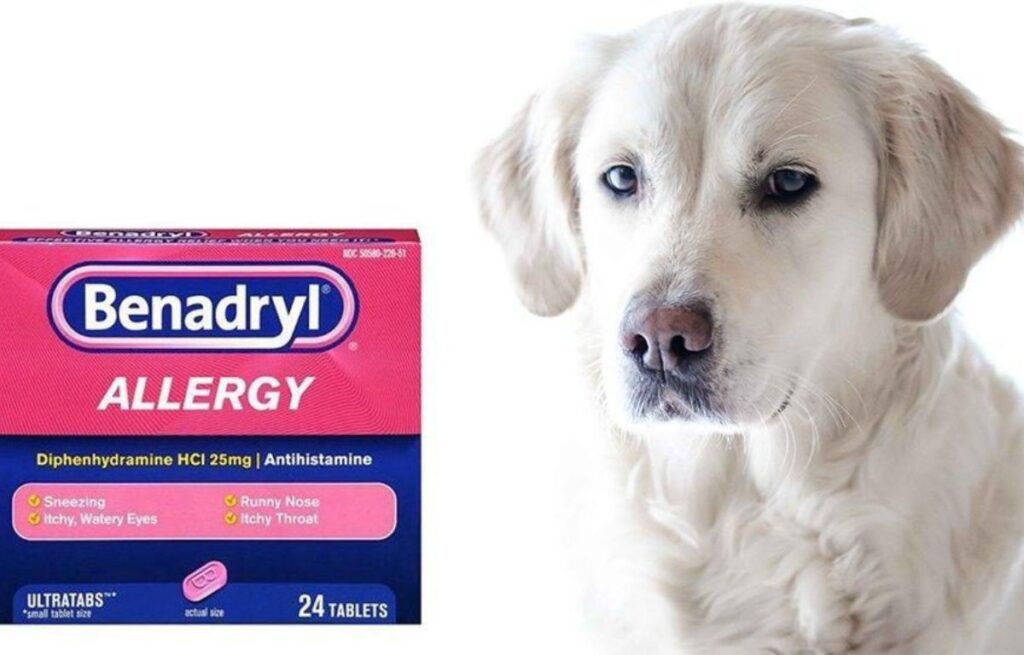As a responsible pet owner, ensuring the health and well-being of your furry friend is of utmost importance. Just like humans, dogs can experience allergies and various allergic reactions that may cause discomfort and distress. Benadryl, an over-the-counter antihistamine, is commonly used to alleviate allergy symptoms in both humans and dogs. However, it’s crucial to understand the proper usage, dosage, and safety guidelines when considering administering Benadryl to your canine companion. In this comprehensive guide, we’ll delve into the question, “How often can I give my dog Benadryl?” to provide you with the information you need to make informed decisions about your pet’s health.

Understanding Benadryl and Its Uses
Benadryl, also known by its generic name diphenhydramine, is an antihistamine that works by blocking histamines, the compounds responsible for causing allergic reactions. In dogs, Benadryl is often used to manage a variety of conditions, including:
- Allergic Reactions: Dogs can exhibit allergic reactions to various environmental factors, such as pollen, dust mites, insect bites, or certain foods. Benadryl can help alleviate symptoms like itching, swelling, and redness.
- Motion Sickness: If your dog experiences nausea or vomiting during car rides, Benadryl can help manage motion sickness symptoms.
- Mild Sedation: Benadryl has mild sedative effects that can help calm anxious or hyperactive dogs, especially during stressful situations like thunderstorms or fireworks.
- Itchy Skin: Dogs with skin irritations, rashes, or hives may find relief from the itching sensation through Benadryl.
Dosage Guidelines for Dogs and How Often Can I Give My Dog Benadryl
While Benadryl can be beneficial for your dog, it’s crucial to administer it in the appropriate dosage to prevent any potential adverse effects. The dosage depends on your dog’s size, weight, and overall health. Generally, the recommended dosage is 1 mg of Benadryl per pound of body weight, given 2-3 times a day. However, it’s essential to consult your veterinarian before administering any medication to your dog, as they can provide personalized recommendations based on your dog’s specific needs.
For instance, if you have a 20-pound dog, the typical dosage would be around 20 mg of Benadryl. It’s advisable to start with a lower dosage and observe your dog’s response before gradually increasing it to the recommended amount.
Factors Affecting Dosage and Frequency
Several factors influence how often you can give your dog Benadryl:
- Dog’s Size and Weight: Smaller dogs require less Benadryl than larger dogs. Always adjust the dosage based on your dog’s weight to ensure safety and effectiveness.
- Underlying Health Conditions: Dogs with pre-existing medical conditions may require different dosages or medications. Consult your vet to determine the appropriate course of action.
- Individual Sensitivity: Just like humans, dogs can have varying levels of sensitivity to medications. Monitor your dog for any adverse reactions and adjust the dosage accordingly.
- Purpose of Use: The frequency of Benadryl administration may differ based on the reason you’re giving it to your dog. For example, occasional use for allergies might be different from using it for motion sickness.
Safety Precautions and Side Effects
While Benadryl is generally safe for dogs, there are some potential side effects to be aware of:
- Drowsiness: Benadryl can cause drowsiness in dogs, especially at higher doses. Monitor your dog’s behavior and adjust the dosage if needed, particularly if your dog needs to stay alert.
- Dry Mouth: Some dogs may experience dry mouth as a side effect of Benadryl. Ensure your dog has access to fresh water to prevent dehydration.
- Upset Stomach: In some cases, Benadryl can cause gastrointestinal upset, leading to vomiting or diarrhea. If this occurs, consult your vet.
- Allergic Reactions: Although rare, dogs can exhibit allergic reactions to Benadryl itself. Watch for signs such as swelling, difficulty breathing, or hives, and seek immediate veterinary assistance if they occur.
When to Consult a Veterinarian
While Benadryl can be a helpful tool in managing your dog’s health, it’s essential to consult your veterinarian before starting any medication regimen. A veterinarian can provide professional guidance on the appropriate dosage, frequency, and usage of Benadryl for your specific dog. Additionally, if your dog’s symptoms worsen or if they experience any unexpected reactions, seek veterinary care promptly.
Conclusion
In conclusion, Benadryl can be a valuable asset in providing relief to your dog’s allergic reactions, motion sickness, or mild anxiety. When used responsibly and under the guidance of a veterinarian, Benadryl can contribute to your dog’s overall well-being. Remember to prioritize your pet’s health and safety by consulting a professional before administering any medication. By understanding the appropriate dosage, frequency, and safety precautions, you can help ensure that your furry companion remains happy, healthy, and comfortable.



